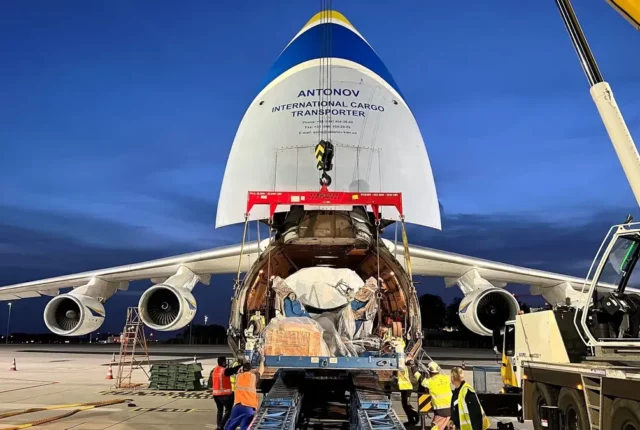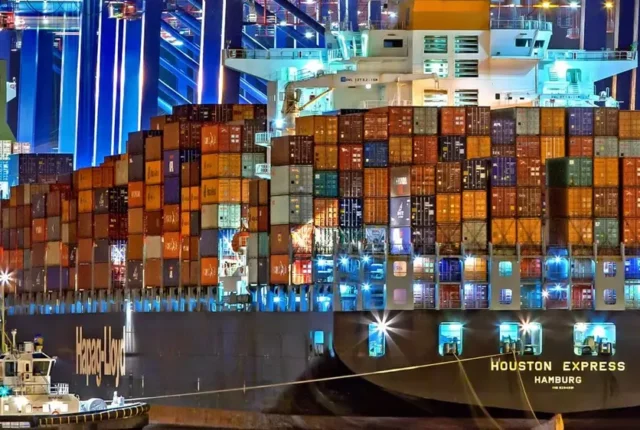
Transform our freight challenges: Urgent strategy needed
Building a “supply chain aware” nation will be essential if Australia is to efficiently deliver the growing freight load, prompting calls from industry to accelerate the National Freight and Supply Chain Strategy.
A consistent approach and access across local, state and the Australian governments would assist the productive flow of products to and from the port, on to rail or through the road network, into warehouses, and to the consumer.
The Australian Logistics Council chief executive Hermione Parsons says increased awareness of the interconnected nature of supply chains was required from all governments and the public.
“In 2019 end-to-end supply chain and freight logistics was the hidden enabler,” she says.
“It all happened and no one knew about it. That has changed because of Covid.
“We need public sector capability in supply chain to make really good decisions about infrastructure and freight connectivity.”
Australia’s economy and lifestyle is dependent on the smooth operation of the $140bn supply chain and the logistics sectors. These underpin the transport of about 800.4bn tonnes of freight each year.
That freight burden is set to grow. According to pre-pandemic data, now considered an underestimate, demand is expected to increase 35 per cent to 2040.
Adding to the challenge is the imperative to transform supply chains sustainably and achieve net zero.
Parsons says a review of Australia’s 2019 national freight and supply chain strategy should be brought forward from 2024 to incorporate the lessons of the pandemic and emerging global challenges.
“It was a completely different era [in 2019],” she says.
“We had not known any disaster or crisis. We need to look at it with a new sense of urgency. It has been shown that we did not have supply chain resilience. As a country we need to build supply chain resilience in the pandemic era … and in the era of serious climatic crisis and geopolitical change.”
Supply chain and logistics continue to confound their historically invisible nature.
While sky-high consumer demand from locked-down consumers has eased, international analysts continue to tip shipping, port and transport delays until March 2023.
The interconnected nature of global supply chains, exemplified in bare toilet paper shelves throughout 2020 and 2021, recently prompted the Australian Retail Association to urge consumers to shop early this year to avoid missing out.
“Supply chain issues have been an ongoing concern for Australian retailers throughout the pandemic and it’s likely to be compounded by these latest developments, in particular as the busy Christmas shopping season approaches,” Australian Retailers Association chief executive Paul Zahra says.
The Australian Logistics Council has called for improved oversight of the end-to-end supply chain, such as greater consistency across the 537 councils, state and regional jurisdictions, improved and more efficient road access for heavy vehicles, better planning for industrial land, and upgrading critical road, rail and port infrastructure to enable greater productivity.
Parsons points to a lack of education among planners about the critical sectors.
Research conducted by the Queensland University of Technology found zero core subjects across the 26 graduate or postgraduate planning university courses mentioned supply chain, freight or logistics.
The electives that mentioned transport were focused on public transport, sustainable transport and active transport.
“The urban planners through their formal education are focusing on amenity, the enjoyment of place, rather than the fundamentals of supply chain that go to the needs of every industry and every product and every life in our society,” she says.
The national strategy was intended to provide oversight of the multiple systems to drive international competitiveness, better co-ordination and catalytic infrastructure investment.
While it has achieved some gains – endorsement of National Urban Freight Planning Principles, the establishment of a National Freight Data Hub, completion of key rail and road links – industry wants it accelerated, with an increased focus on access, sovereign capability and skills.
A Department of Infrastructure, Transport, Regional Development, Communication and the Arts spokesman says the strategy aimed to position Australia’s multimodal freight supply chains and workforces to meet the challenges of the coming decades.
“The Australian government will continue to consider all viable options to support the freight industry and supply chains, including where the timing of measures in the current strategy can be accelerated, in consultation with industry and states and territories,” they say.
An update on the implementation of the strategy will be released in its annual report next month.
‘We have the opportunity to create a setting that encourages investment and adoption of transition technology and better infrastructure’
– Eliza Anning, Linx Cargo Care Group chief transformation officer
Toll Group chief corporate affairs officer Zed Ivankovic says the company supports the strategy to address “challenges within the complex environment of competing policy priorities across the different modes of transport and multiple levels of government”.
“Toll believes that current governments should ensure that new policies in areas such as Melbourne-Brisbane Inland Rail and enhanced protection of critical infrastructure is aligned with the strategy’s objectives,” she says.
“Given present and recent challenges such as natural weather events, global geopolitical tensions and Covid-19 recovery, Toll would welcome the acceleration of the strategy.”
She says supply chain resilience could be enhanced by addressing skills shortage, assisting businesses to diversity their sourcing and manufacturing markets, and building and finalising key infrastructure and intermodal hubs.
An ARTC spokesperson says a review would help to highlight the lessons and opportunities in freight movement and supply chain distribution in the wake of the pandemic.
“From an ARTC perspective, our continued focus is on investing in our network and enhancing network resilience to ensure customers can get their goods to market.”
Australian Trucking Association chair David Smith says infrastructure and regulatory upgrades are necessary to enable greater productivity through the use of high-performance vehicles.
“Greater access for high-performance vehicles is pretty much essential for the economic future of the country,” he says.
Further, Smith says the permit system for non-standard trucks on roads created unnecessary delays and could be solved through fleet tracking and telematics.
“Part of the strategy needs to be removing the antiquated, old-fashioned, out-of-date permit system,” he says.
A Department of Infrastructure, Transport, Regional Development, Communication and the Arts spokesman says the most recent Infrastructure and Transport Ministers’ meeting progressed reforms to the Heavy Vehicle National Law.
This included “an ambitious goal” to remove the need for 90 per cent of access permits on heavy vehicle routes over the next five years, provide general road access for PBS level 1 and B-double access for PBS level 2 vehicles and create access certainty for other combinations through the road network.

Better road and rail connections will help to alleviate the challenges in the medium to long term.
This year the Australian government will spend $15.58bn on its Infrastructure Investment Program, including upgrades to Queensland’s Bruce Highway, NSW’s Western Sydney Roads, and upgrading freight routes in the Northern Territory and South Australia.
In October, the Albanese government also announced a review of the scope and cost of the $14.5bn Inland Rail.
The review will also assess potential connections to intermodal terminals in Melbourne and Brisbane and greater links to the ports, and an extension such as a Toowoomba to Gladstone link.
LINX Cargo Care Group chief transformation officer Eliza Anning says the logistics sector keeps “each and every industry in our economy and our communities viable”.
“The issues the logistics sector faces including labour shortages, cost increases, infrastructure bottlenecks, don’t just impact our day-to-day operations, they have clear implications for those communities, industries and businesses of all sizes,” she says.
“Previously, we may have thought some of these issues are future problems but they are here today and will be compounded by the hastening need to strategically plan for the sector – and broader economy – to transition to a lower carbon economy.
“Done correctly with the right level of engagement from the full supply chain, investors, operators, regulators and government, we have the opportunity to create a setting that encourages investment and adoption of transition technology and better infrastructure – that’s where we will find greater efficiencies.
“But it really does require collaboration to make it happen because one or two of these parties won’t be enough to generate the change or fiscal investment needed to make it happen.”
Author
ATOS-MARelated posts
The Price of Speed: Balancing Costs and Benefits in Air Freight
In the world of air freight, the need for speed often takes center stage. Busine
The Impact of 4PL on Australia’s Logistics and Freight Management
The logistics and freight management landscape in Australia is undergoing a sign
Supply Chain Optimization: Maximizing Efficiency and Minimizing Costs
In today’s competitive business landscape, supply chain optimization plays






